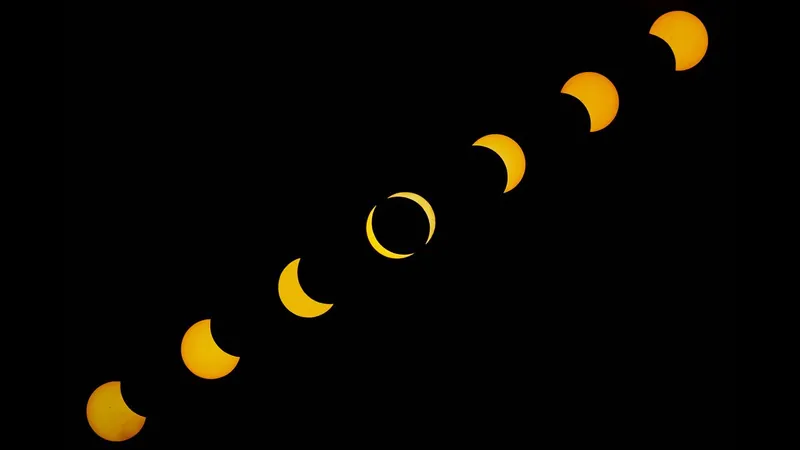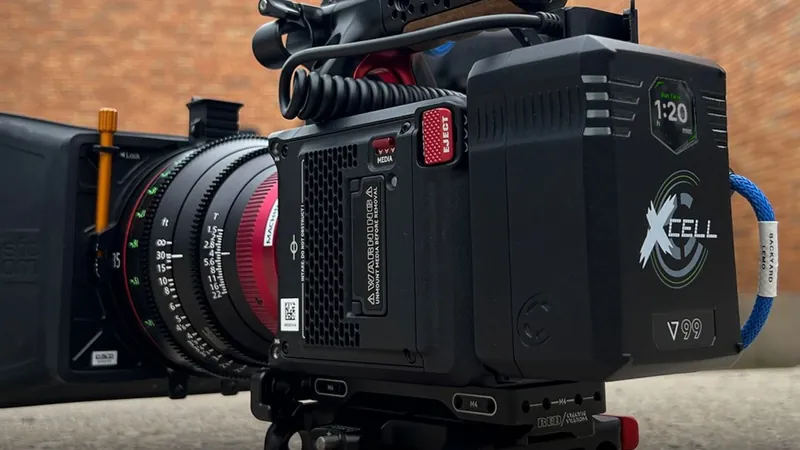
1 Week to Go: Gear Up for the Spectacular March 2025 Partial Solar Eclipse!
2025-03-22
Author: Siti
Mark your calendars for Saturday, March 29, 2025! A breathtaking partial solar eclipse is set to take place, visible across the Northern Hemisphere, attracting the attention of millions in Europe, North America, and parts of Africa. While this event won't feature a total eclipse—where the moon completely obscures the sun—the celestial show promises to be an unforgettable experience.
As the moon glides between the Earth and the sun, it will create a stunning visual effect where it seems to have taken a "bite" out of our nearest star. This phenomenon, a partial solar eclipse, occurs when only a part of the sun is obscured by the moon.
Eclipse Timing and Maximum View
The eclipse will kick off at 4:50 a.m. EDT (0850 GMT) and will wrap up by 8:43 a.m. EDT (1243 GMT), with the peak of the action occurring at 6:47 a.m. EDT (1047 GMT). The most dramatic view of the eclipse, where up to 94% of the sun will be blocked, will be in far northern Quebec, Canada.
Best Viewing Locations: Don’t Miss Out!
North America: Eastern Canada and the northeastern U.S. will offer spectacular views. Expect a dramatic sunrise where locations like New Brunswick, northern Quebec, and Maine will witness two solar "horns" appearing as the sun peeks over the horizon.
Europe: A significant portion of the continent will experience the eclipse, with the most profound effects seen in the northwest. Greenland is set to enjoy an impressive 86% coverage, while Iceland's Westfjords will see around 70% obscuration. Major cities including London (30%), Edinburgh (40%), and Paris (23%) will also capture a fair share of this event.
Africa: The eclipse will be more muted, but Morocco will have the best view on the continent, with up to 18% obscuration.
Safety First: How to Safely Watch the Eclipse
Safety is paramount when it comes to viewing a solar eclipse. Under no circumstances should you look directly at the sun without proper eye protection. Be sure to equip yourself with eclipse glasses or use a solar filter for any telescopes or binoculars. If you don’t have specialized equipment, a simple pinhole projector can be made using everyday items found around your home.
For those eager to witness the eclipse from home or share the experience with friends, stay tuned! We’ll be livestreaming the partial solar eclipse, providing you with an engaging window into this cosmic event. Details on how and where to watch will be revealed as the date approaches.
Prepare yourself for this astronomical spectacle—it's going to be one for the books! Don't miss out on what promises to be a fascinating sight in our skies!






 Brasil (PT)
Brasil (PT)
 Canada (EN)
Canada (EN)
 Chile (ES)
Chile (ES)
 Česko (CS)
Česko (CS)
 대한민국 (KO)
대한민국 (KO)
 España (ES)
España (ES)
 France (FR)
France (FR)
 Hong Kong (EN)
Hong Kong (EN)
 Italia (IT)
Italia (IT)
 日本 (JA)
日本 (JA)
 Magyarország (HU)
Magyarország (HU)
 Norge (NO)
Norge (NO)
 Polska (PL)
Polska (PL)
 Schweiz (DE)
Schweiz (DE)
 Singapore (EN)
Singapore (EN)
 Sverige (SV)
Sverige (SV)
 Suomi (FI)
Suomi (FI)
 Türkiye (TR)
Türkiye (TR)
 الإمارات العربية المتحدة (AR)
الإمارات العربية المتحدة (AR)